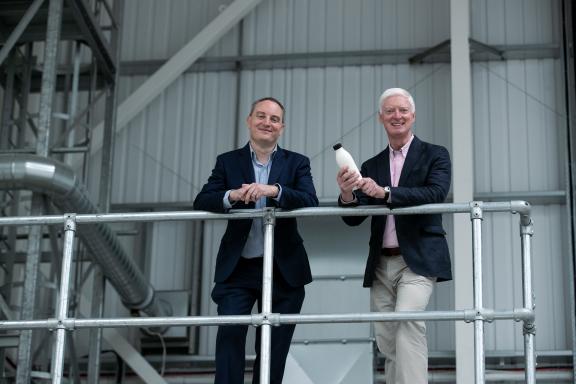- Income increased nearly 80% to £34.5m; income was more than double the Bank’s operating costs (£16.2m)
- The Bank has committed £785m across 42 businesses and projects since its inception and has crowded in £1.4bn of additional investment
- It crowded in £324m this year, substantially above its £181m target
- Net unrealised or paper loss on revaluation of investments was £77m relating to the Bank’s portfolio of long-term investments. There were no realised losses

Today, the Bank published its latest annual report, covering the period 1 April 2024 to 31 March 2025. Its chairman said the year had been one of “continued progress in developing the Bank’s capabilities and investment portfolio against a challenging economic context”.
The Bank was established to invest patient capital in companies and projects with potential to deliver both financial returns and societal benefits. As Scotland’s development bank, it is mandated to take on more risk than commercial investors and its patient capital approach means it holds investments for longer periods of time, supporting and enabling scale-up stage businesses to drive growth in the economy.
In May 2025, Audit Scotland published a performance audit of the Bank and concluded it has been well run to date, has a rigorous investment process, and has made a good start on realising the economic and societal ambitions it was established to deliver.
For the second year, the Bank’s income (£34.5m) exceeded its operating costs (£16.2m), with income increasing by 78.8% year-on-year, while its portfolio grew to 42 businesses and projects.
In FY24/25, it committed £145m and “crowded in” a further £324m, meaning the Bank has leveraged its capital to increase additional investment in Scotland. Since it was launched in November 2020, the Bank has committed more than £785m and crowded in a further £1.4bn.
This financial year also saw the Bank’s subsidiary, Scottish Investments Ltd. (SIL), secure phase one authorisation from the Financial Conduct Authority (FCA). This set of permissions enables SIL to arrange investment deals, which supports the Bank’s objective to crowd in more private investment and delivers on its third-party capital strategy.
Despite this progress, many of the Bank’s investees are operating in a challenging economic environment, contributing to an unrealised loss of £77m due to valuation changes within the portfolio.
Willie Watt, the Bank’s chairman, said: “This year marked our fourth full year of operations, and we have made continued progress in developing the Bank’s capabilities and investment portfolio against a challenging economic context. We have expanded our portfolio and are investing in exciting companies with ambitious growth potential.
“Ongoing market volatility has followed years of geopolitical and economic uncertainty, creating a challenging environment for growing businesses and investment. In these difficult economic times, the role of a development bank is even more important. Our capital is playing an important part in helping companies scale when the wider market instability and continued cost of living pressures are hindering growth plans.
“We have a long-term goal of developing a vibrant, self-reinforcing and high-investment ecosystem in Scotland that makes a lasting contribution to our economic prosperity. We will navigate conducive and challenging economic climates with a focus on delivering long-term societal and economic impact.”
The Bank’s CEO, Al Denholm, said: “Despite challenging economic headwinds and a cautious investment landscape, we crowded in £324m of additional capital alongside our investments this year, well above our target of £181m.
“This has helped scale existing investees with high-growth potential, like property technology company Utopi and digital forensics company Cyacomb. We have also grown our portfolio with exciting new investments in companies like plastic-free bottling company Pulpex, subsea cable manufacturer XLCC, and construction firm DITT’s mid-market rental homes in Shetland.”
The Bank’s commitment (£145.1m) and deployment figures (£157.5m) for the year were both below its projections, but this year also marks the first time the Scottish Government has awarded greater flexibility to the institution’s annual investment budget.
Denholm explains: “Investment opportunities don’t come to us in a linear way, and we would never compromise our robust due diligence process to rush a deal through before the end of a financial year.
“The challenge we have in making investment decisions within the constraints of a yearly budget cycle was an issue highlighted in Audit Scotland’s report on the Bank. We are, therefore, very pleased the Scottish Government has introduced greater flexibility, enabling us to carry over some investment budget allocation. Looking forward, we have a healthy pipeline of investment opportunities.
“As a young development bank and an investor in higher risk, early-stage companies, it is not uncommon or unexpected to see significant variations in the estimated fair value of our portfolio.
“We hold our investments over a longer term and would expect to see our valuation change and level off as our portfolio matures. Critically, as an institution we are hitting significant milestones, like our phase one FCA authorisation. We are attracting investor talent and leveraging our public sector funding to crowd in significant private sector capital.”

